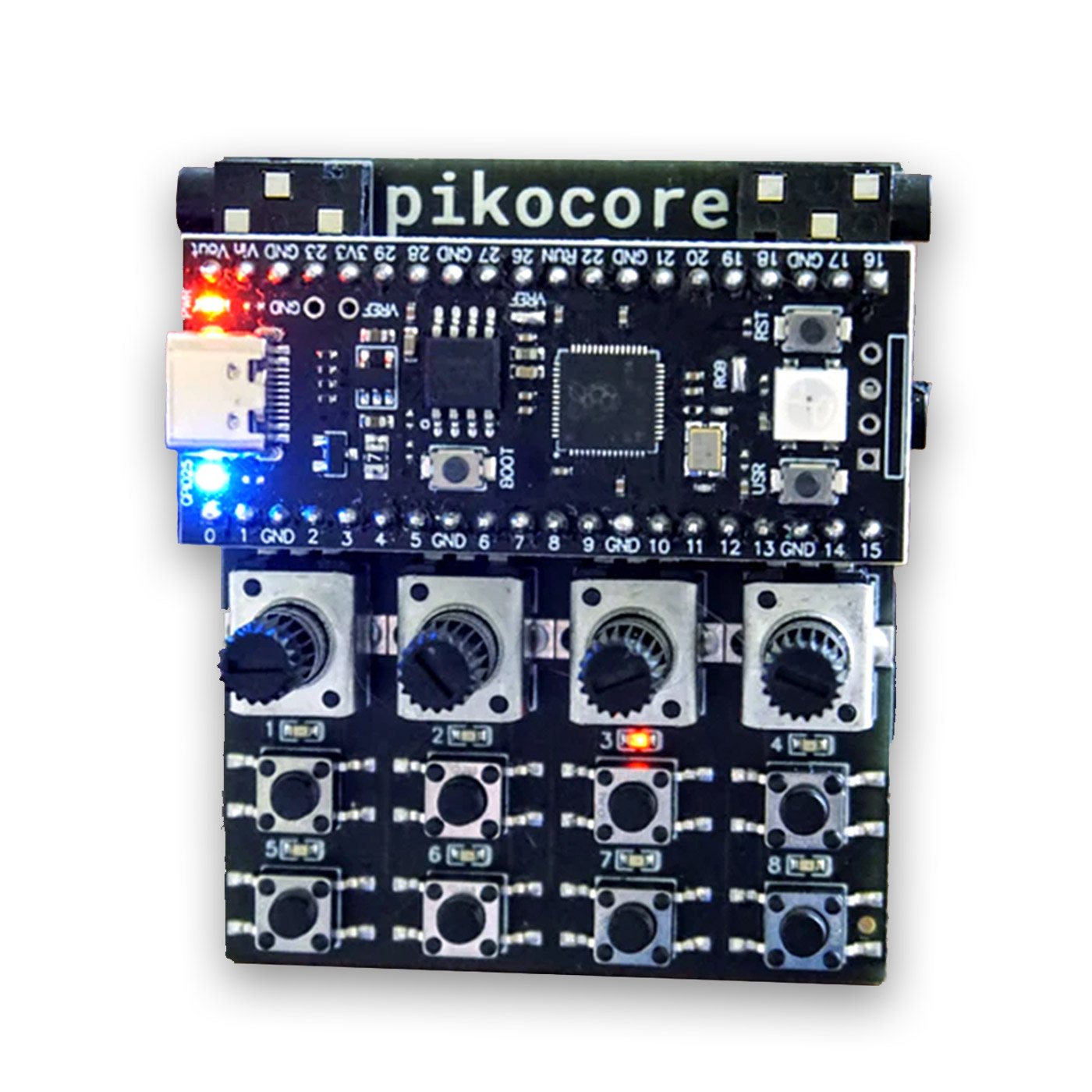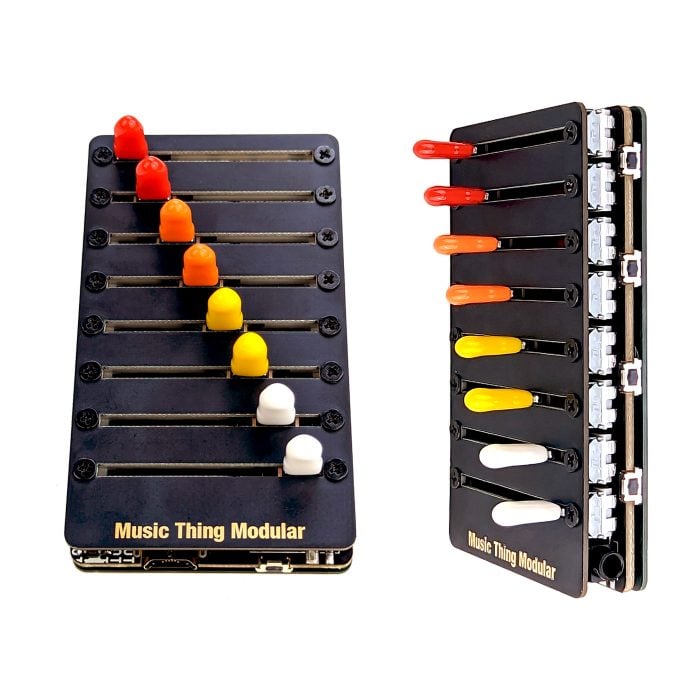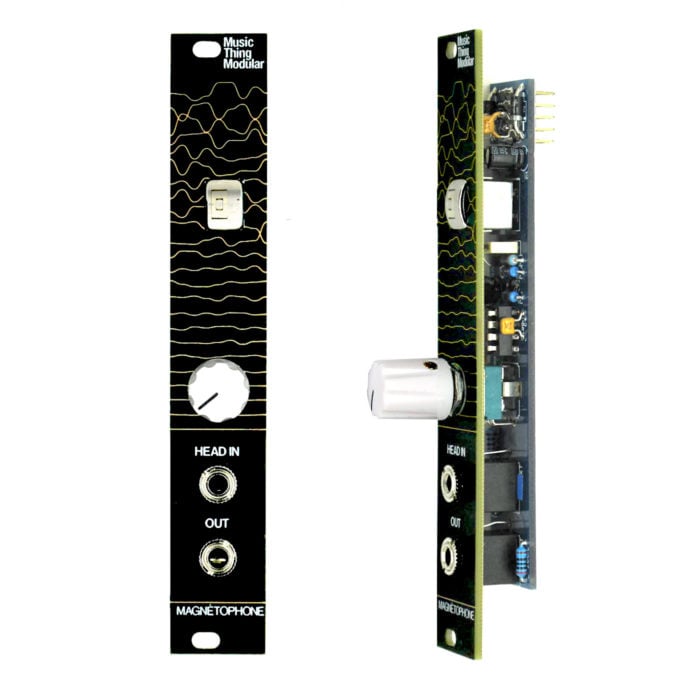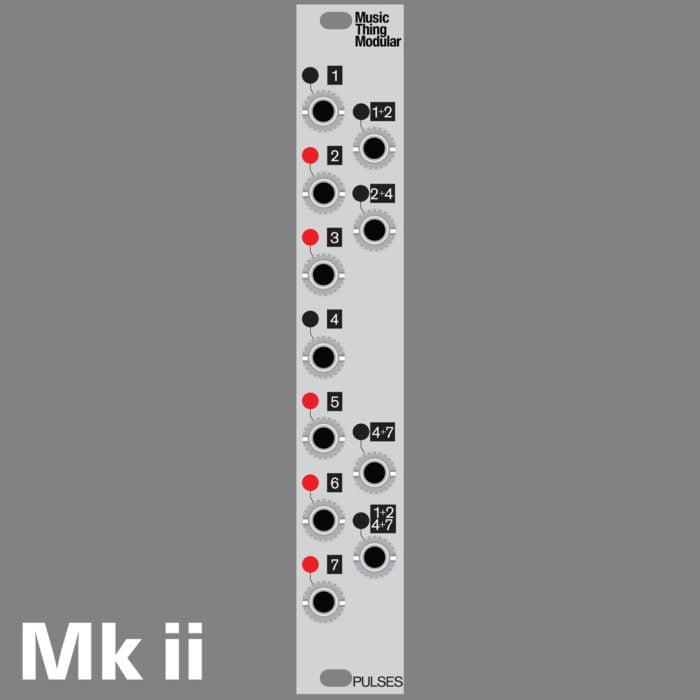Description
Pikocore is a lo-fi sample mangler based on the Raspberry Pi Pico. There are eight buttons and four knobs that can be used to manipulate the loaded samples. The buttons can be used to jump between samples and re-trigger audio in real time, while the knobs can be used to switch and edit various parameters including: Probability, Time-stretch and Sequence recording/playback.
jumping: press any of the eight buttons to jump to that relative position in the sample.
retriggers: press and hold a button and press another button to create a retrigger effect. the retrigger speed is based on the position of the second button press. random effects add added to the retriggers, such as changes in speed, pitch, filter envelopes, or volume envelopes.
stop/play: press the two leftmost buttons and the two rightmost buttons simultaneously to stop/play.
Button mashing is encouraged!
The rightmost knob on the Pikocore is a filter/volume knob that controls the output level., While the leftmost knob is the selector knob, which can choose between eight different positions. Each position changes a different pair of parameters, which can be changed using the middle two knobs, knob a and knob b.
| selector pos | knob a | knob b |
|---|---|---|
| 1 | sample | break |
| 2 | filter | stretch |
| 3 | gate | gate prob. |
| 4 | jump prob. | retrig prob. |
| 5 | tunnel prob. | reverse prob. |
| 6 | sequencer rec. | sequencer on |
| 7 | save | load |
| 8 | volume/fold | tempo |
- sample changes the sample being played (holds >100 samples totaling ~8 minutes).
- break modifies all probabilities simultaneously using varied easing functions.
- filter is a resonant low-pass filter that attenuates higher frequencies.
- stretch performs a lofi timestretch effect.
- gate controls the amount of gating on the sample.
- gate prob. controls the probability of gating.
- jump prob. controls the likelihood of jumping to a different step in the current sample.
- retrig prob. controls the likehood of retriggering.
- tunnel prob. controls the likelihood of jumping to a different sample.
- reverse prob. controls the probability of reversing direction.
- sequencer rec will record sequences, up to 128 steps (cw = record, ccw = erase).
- sequencer on turns on the sequencer (cw = on, ccw = off).
- save saves probabilities, sample, volume, and tempo (cw = save).
- load recalls the last save (cw = load).
- volume/fold changes the volume and adds a wavefolding effect.
- tempo controls the tempo in steps of 5 bpm (50-305), encoded in binary.
Pikocore uses a audio click signal to sync and is fully compatible with sync signals coming from other devices, like the teenage engineering pocket operators. the pikocore syncing operates at 2 ppqn and has max input/output voltages of 3v. The upper left audio jack takes in a po sync signal (SYN1 on pocket operator) and will automatically sync the pikocore. the output sync is separate from the main audio output jack, situated below the pico mcu. when using a pocket operator, set the receiving device to SYN4 (or SYN5 if the chain continues.
Features:
- Capable of holding up to 8 minutes of 8-bit, 33 khz monophonic samples.
- Selectable bpm between 60 and 300, with samples mangled by beat-synced effects (Stutter, Retrig, Gate, Tunneling).
- Sync-compatible with pocket operators.
- Loaded with real-time effects like a resonant filter, timestretching, and wavefolding.
- 128-step sequencer with recording/playback
- Save and load via eeprom for instant patch recall.
- Load custom firmware, new samples, all through usb-c.
- Powered by a single AAA battery (not included) for up to 3 hours or via usb-c.
- Open-source, wonderfully hackable.
Pikocore – User Manual & Build Guide | Infinite Digits website | Build Video
Itty Bitty Midi
The pikocore is capable of listening to midi using an itty bitty midi device plugged into its clock input.
This behavior needs to be enabled at the firmware level, and the firmware tool can be used to update the settings to listen to midi.
The pikocore automatically sets tempo and syncs to a midi clock. it also listens to midi start/stop/continue commmands to synchronize with sequencers. the firmware tool lets you change the midi clock division. you can also toggle a setting in the firmware to have the key presses of a midi keyboard work as buttons, so you can sequence your own button presses.














